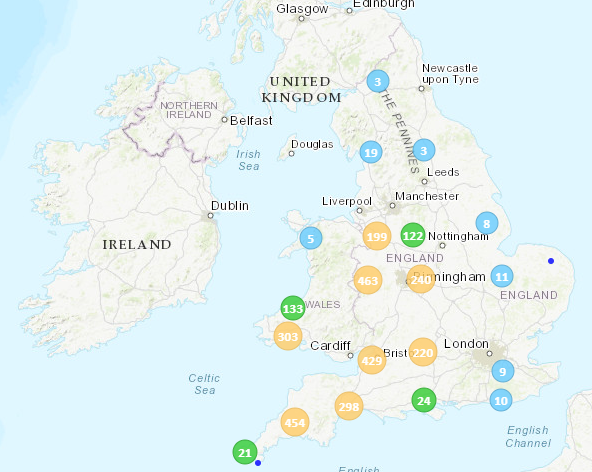Why do this?
Contact with TB-infected cattle in neighbouring herds is another potential source of infection for your cattle. Infection from neighbouring herds can occur via direct contact (e.g. nose to nose) or indirect contact via contaminated equipment or aerosol spread during manure or slurry spreading.
How to reduce your risk

Check local TB breakdown data online
Information on the location of ongoing and resolved TB breakdowns in England and Wales over the last 10 years is available on ibTB, an online interactive map. Awareness of local TB breakdowns will help you to better understand the nature and scale of the disease threat to your herd.
The Animal & Plant Health Agency publishes bovine TB epidemiology reports for the Low Risk Area (LRA), Edge Area and whole of England describing the most likely causes of TB breakdowns and providing an overview of the scale of the TB problem.

Put in place effective barriers between neighbouring herds
It's important to maintain perimeter fencing that prevents direct contact with neighbouring cattle, as well as straying and mixing with stock from other herds. This can be achieved by installing double fencing. The boundary should be as wide as is practically possible, but at least three metres.
This is particularly important for farms with multiple land parcels as they have more neighbours and therefore are at increased risk of being exposed to TB infection. If possible, you should avoid grazing cattle in fields that are adjacent to fields that have livestock in at the same time, or where manure or slurry is being spread
Avoid sharing equipment or vehicles with other farms
Indirect transmission can occur via equipment that has been contaminated with M. bovis bacteria and other pathogens. Some pieces of equipment carry a greater risk than others. Equipment for handling and spreading manure, or for handling and transporting livestock, is likely to pose a higher risk than equipment that has had no contact with animals or their excretions.
If sharing is unavoidable, then it is important for equipment to be properly cleaned and disinfected before entering the farm. All debris should be visibly removed before disinfection, as disinfectants are less effective when applied to dirty surfaces. The same precautions should also be taken for high-risk vehicles (e.g. carcase collection vehicles and livestock lorries) and personnel that enter the farm. Cleaning equipment and disinfectant should be available at entrances and visitors should use them.
Avoid sharing cattle grazing with other herds
Sharing grazing land with livestock owned by other people is particularly risky, particularly in high TB incidence areas where potentially infected livestock may come into close contact with uninfected cattle through direct contact or indirectly at shared watering and feeding points.

Useful resources
- ibTB, an interactive map showing ongoing and resolved TB breakdowns in England and Wales over the last 10 years
- Bovine TB epidemiology reports
- Defra approved disinfectants for TB